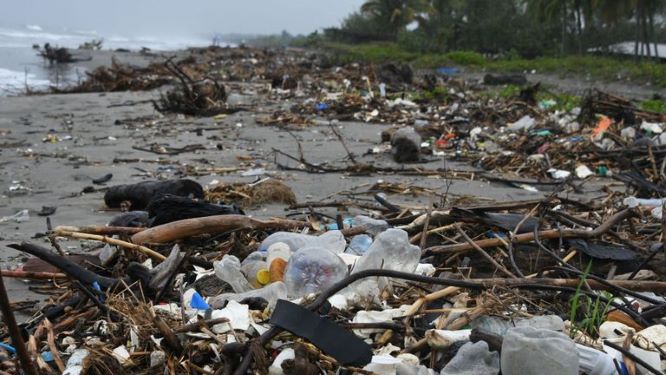

All big cities, especially those in developing countries from India, China to Brazil with rapidly expanding populations, face similar problems from rising air pollution to faulty Wastewater management. and funnily all at the same time
How? Heavily polluted urban waterways emit toxic gases such as methane and nitrous oxide which are also greenhouse gases, and a recent global study found that concentrations of antibiotics in some of the world’s rivers exceed safe levels by up to 300 times.
No one wants pollution and there is growing awareness about the danger it poses. This is why in 2017, members of the United Nations adopted the report Towards a pollution-free planet.
“While the world has achieved significant economic growth over the past few decades, it has been accompanied by large amounts of pollution, with significant impacts on human health and ecosystems and the ways in which some of the major earth system processes, such as the climate, are functioning,” it says.
[related_post]
For example, 3.5 billion people depend on oceans as a source of food, yet oceans are used as waste and wastewater dumps. On land, water laden with toxic chemicals from industry pollutes waterways but also the air we breathe. Likewise, fertilizers used in agriculture cause nutrient pollution in the form of run-off into rivers, lakes and wetlands. These ecosystems become polluted in the process, and cause air pollution. One of the consequences of nutrient pollution is algal blooms which suffocate fish and emit noxious gases. Furthermore, intensive livestock production produces high levels of methane. Chemicals used in mining also pollute water sources and the air. As land and ocean are interconnected, these pollutants, in one way or another, will reach groundwater, as well as the coast and the ocean.
“Unsustainable human activities, from farming and mining to industry and infrastructure, are undermining the productivity of vast areas of farmland, forests and other ecosystems across all continents. This degradation threatens food security, water supplies and the biodiversity upon which human development depends. It drives and is exacerbated by climate change. And it will put the Sustainable Development Goals out of reach unless it is urgently addressed,” says the UN Environment Programme policy brief A new deal for Nature – Restore the Degraded Planet.
Water a limited resource with high dependence
Only about 2.5 percent of all the water on Earth is freshwater. And of this freshwater only about 1.2 percent is readily available as surface freshwater—the rest is groundwater or locked up in glaciers and ice caps. So, when surface freshwater gets polluted we’re in trouble.
Even when groundwater gets polluted, we are also in trouble, as many countries use groundwater for irrigation. And yet, over 80 percent of the world’s wastewater is released to the environment without treatment.
Wastewater treatment benefits
Various countries all around the world put Sustainable Development goals like SDG1,2—No Poverty and Zero Hunger, as its top priority.
“Improvements to wastewater management in developing countries can pay enormous dividends in terms of the health and well-being of the world’s poorest people, for example, the more than 800 million who are undernourished,” says Birguy Lamizana, a UN Environment specialist on wastewater and pollution. But reliable, consistent and trustworthy data sources are needed.
“We need more and better-quality data to assess the status and impact of wastewater pollution, and capacity-building support needs to be provided to countries to improve their ability to develop national statistical systems and use pollution-related statistics to better manage and monitor their water, soil and air quality,” says Lamizana.
“Open source maps using geo-spatial data showing maps of pollution, dynamics of dispersion, combined with population density, protected areas or other bio-physical or socio-economic datasets are urgently needed,” she adds.
The data can help chart out the sources of clean water, its effect on groundwater replenishment, the content and PH levels change of surface as well as groundwater. “There are many measures that can be taken to address pollution,” says Lamizana. “The objective is to select the key measures that can bring most benefits across pollution dimensions (i.e. air, water, soil/land, marine and coastal) and across sectors (e.g. agriculture/food security, industry, transportation, residential, extractive), using a life-cycle approach.”
All this data can help the authorities at national and local level decide what works and what does not? which finally could join the dots which technique(farming, irrigation, water treatment or water conservation) actually makes a difference.
1. The mandate for blending Compressed Biogas (CBG) with natural gas has come into effect…
Andhra Pradesh is striving towards greening its energy sector with quite some speed. In a…
With an objective to bolster India’s green energy goals, a Tripartite Agreement has been signed…
The Union MNRE Minister Pralhad Joshi launched the Green Hydrogen Certification Scheme of India (GHCI)…
India’s energy conglomerate Bharat Petroleum Corporation Limited (BPCL) has commissioned a 5MW green hydrogen plant…
In a historical development, the European Space Agency (ESA) has successfully launched its pioneering ‘Biomass’…